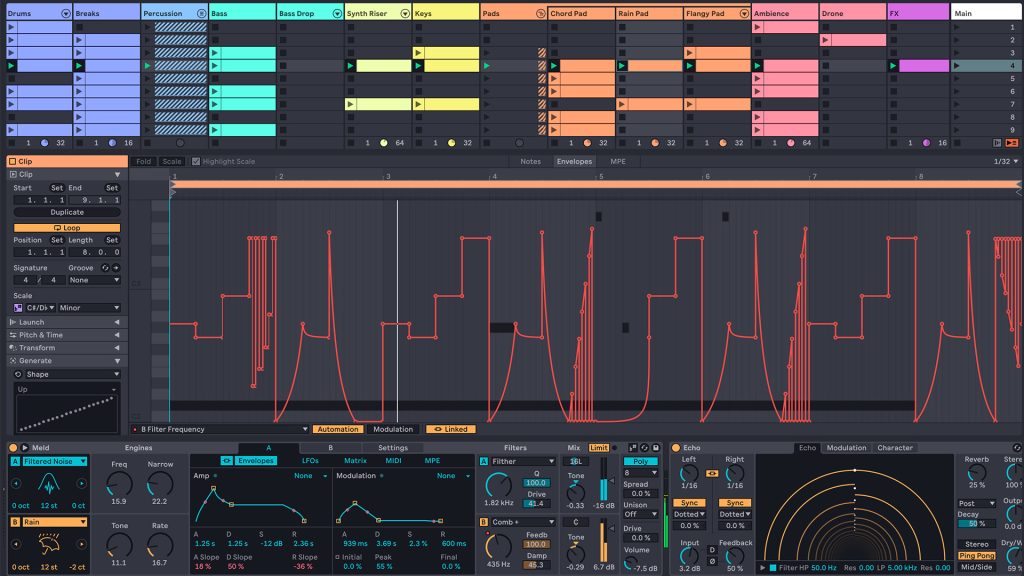When it comes to digital music production, choosing the best DAW (Digital Audio Workstation) can be a daunting task. With so many options available, finding the right one depends on your workflow, features, and personal preferences. One of the most popular DAWs among producers, DJs, and musicians is Ableton Live. But is Ableton Live the best DAW for your needs? This article explores its features, advantages, and potential drawbacks to help you make an informed decision.
Explore
What Sets Ableton Live Apart?

Ableton Live has gained a strong reputation for its intuitive workflow, powerful features, and seamless integration for live performances. Unlike traditional DAWs, Ableton Live offers two distinct views:
- Session View – A non-linear interface ideal for improvisation and live performances.
- Arrangement View – A traditional timeline-based workspace for detailed track arrangement.
This flexibility makes Ableton Live a unique and dynamic tool, especially for electronic music producers and live performers.
Key Features of Ableton Live
Intuitive and Fast Workflow
One of the primary reasons why many musicians consider Ableton Live the best DAW is its streamlined workflow. The drag-and-drop functionality, customizable interface, and real-time editing capabilities allow producers to work efficiently without interrupting their creative process.
Extensive Sound Library and Instruments
Ableton Live comes packed with high-quality sounds, instruments, and effects, including:
- Drum Racks – Perfect for designing beats and drum loops.
- Wavetable Synth – A versatile synthesizer for creating unique sounds.
- Simpler and Sampler – Tools for manipulating samples creatively.
- Max for Live – An advanced feature that allows for deep customization and the creation of unique audio tools.
These built-in resources make it easier for producers to craft professional-quality music without relying heavily on third-party plugins.
Seamless Integration with Hardware
Ableton Live supports a wide range of MIDI controllers and hardware synthesizers. Devices like Ableton Push provide a tactile experience, making production and live performances even more engaging. Additionally, its MIDI mapping functionality allows users to customize their setup effortlessly.
Advanced Warping and Time-Stretching
One of the standout features that make Ableton Live a contender for the best DAW is its advanced warping engine. This technology enables users to time-stretch, sync, and manipulate audio without compromising quality. Whether you’re remixing tracks or correcting timing issues, the warping feature ensures precise control over audio elements.
Collaboration and Live Performance
Ableton Live is widely used in live performances due to its real-time capabilities. The software allows artists to trigger clips, loops, and effects seamlessly. Moreover, the introduction of Ableton Link enables multiple devices to synchronize effortlessly over a network, making it ideal for collaborative performances and studio sessions.
Potential Drawbacks of Ableton Live
While Ableton Live offers a plethora of powerful features, it’s not without its downsides. Some aspects that might deter certain users include:
- Steep Learning Curve – Beginners may find it challenging to navigate the interface initially.
- Expensive Pricing – Compared to other DAWs, Ableton Live’s full suite can be pricey.
- Limited Audio Editing Capabilities – Some users find its audio editing tools less advanced compared to competitors like Pro Tools or Logic Pro X.
Understanding these drawbacks can help you determine if Ableton Live truly fits your needs as the best DAW for your workflow.
How Does Ableton Live Compare to Other DAWs?
Ableton Live vs. FL Studio
FL Studio is another popular DAW, especially among beatmakers and electronic music producers. While FL Studio is known for its easy-to-use interface and powerful piano roll, Ableton Live stands out with its live performance capabilities and warping engine.
Ableton Live vs. Logic Pro X
Logic Pro X is a favorite among Mac users, offering a robust suite of recording and mixing tools. While Logic Pro X excels in traditional music production, Ableton Live is superior for real-time performance and electronic music creation.
Ableton Live vs. Pro Tools
Pro Tools is the industry standard for professional recording and mixing. It offers superior audio editing and mixing features, making it the go-to choice for studios. However, Ableton Live’s intuitive workflow and performance tools make it a better option for electronic music producers and live performers.
Who Should Use Ableton Live?
Ableton Live is an excellent choice for:
- Electronic music producers looking for an intuitive and flexible DAW.
- Live performers who need real-time control over their music.
- Music producers who enjoy working with loops, MIDI, and samples.
If you prioritize creativity, efficiency, and performance integration, Ableton Live could be the best DAW for your needs.
Final Thoughts on Ableton Live
Is Ableton Live the best DAW? The answer depends on your production style and requirements. It offers an unparalleled workflow for electronic music, a vast sound library, and excellent live performance features. However, if you require extensive audio editing tools or a budget-friendly option, other DAWs might be more suitable.
For further exploration, check out the official Ableton Live page to learn more about its features and pricing.
